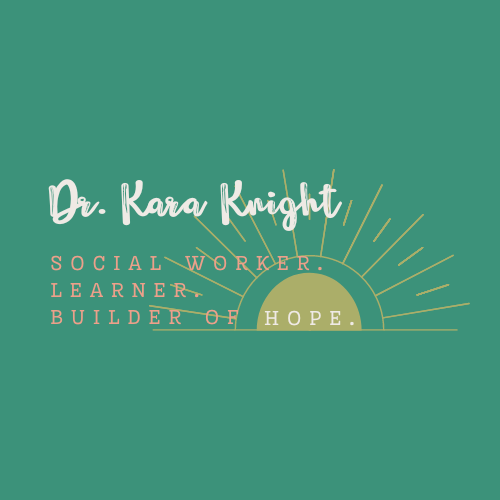
Recently, while I was on Instagram, I saw this incredible image from the @biglifejournal that my sister-in-law posted, who is an outstanding Mom to an adorable and hilariously stubborn toddler named Westin- who also happens to be the love of my life, too. Although my sister-in-law posted this quote with the idea of how it applies to her experience in parenting, I immediately thought of how this fits education as a whole, too.
When it comes to learning and teaching students, social-emotional health is a prerequisite. It is also an area that all schools and educators, including myself, are pushing themselves to learn more about. But, I believe it all starts with school climate. When we think of school climate, we always need to consider these four main dimensions: Safety, teaching and learning, relationships, and the environment. With that said, social-emotional health needs to be a priority in all four of these dimensions. Rather than social-emotional needs being an add-on of what we do after the fact in those areas, it is imperative it is the forefront of all we do and that we integrate it purposefully and wisely while considering a myriad of student needs.
According to this ASCD article that also highlights the importance of social-emotional health, the author states that “social-emotional health is no longer a luxury that we consider, but a requirement of everything we should do.”
With all of this said, I want to share some highlights of what my school and school district is doing in the area of social-emotional (SEL) to start this conversation on my blog:
- Smiling & Greeting: A tried and true practice that always works is to smile and greet students upon entering your school and classroom- Every day, every time. When people feel that they are genuinely being welcomed, they are more likely to feel like they belong.
- Yoga Club: Our District Coordinator of Educational Equity and Diversity, Brittany Hogan at @rsd_diversity and our school Social Worker, Ashley O’Daniel at @RSMS_SW have collaborated with staff and outside organizations to bring in yoga to our school as an after school club. Brittany Hogan has also worked with many other schools in our district to provide this essential resource. Students look forward to this club so they can have an opportunity to connect and reset from the day and week.
- Restorative Practices: I am super passionate about restorative practices and how that applies to build a positive school culture by helping students to have conversations that bring real solutions to tough problems. This is also a focus in my district, which I am very grateful for. I have discussed restorative practices previously on my blog and have free resources to share with you- Check them out here. In addition to restorative conversations, we are also looking to create restorative circle groups in my school to broaden our work.
- Check-in & Check-out: No matter what grade level or age you work with, check-in’s and check-outs are a necessity in helping support SEL needs. I am an assistant principal in a middle school and check-in and check-out with several students a week. Yet, I am not alone in this as work- Many other staff members- From counselors to teachers check-in with students on a daily, weekly, or bi-weekly basis, depending on the needs and wants of the student(s). Check-ins can look different for everyone, but it is always a positive conversation that lets a student know that we are here for them, and we care about them while seeing how they are doing and feeling and how we can support.
- Student Journaling and Reflections: When students are in my office for SEL needs and breaks, I give them an opportunity to journal, doodle, or read. I have a bookshelf in my office that houses books, mandala coloring pages, Play Dough, journaling scrap sheets, fidgets, and more to give students a chance to decompress and ease their mind. I have seen this work wonders in helping to recalibrate a student! Sometimes, we all just need a moment of calm to get us back on track; Even adults who come to my office use my bookshelf for the same reason students do.
- Student Digital Citizenship Leaders: If you have followed me for a while, you know that I have always had a passion for digital citizenship. In the digital age we currently live in I believe that SEL needs and digital health go hand-in-hand. As leaders, we must help students navigate these waters while also learning about what they are experiencing first-hand so we can be of better support. We cannot assume, we must ask. This year, our school librarian and myself are working to build a weekly Student Dig Cit group of student leaders that can help us be the best we can be in this area. I cannot wait to share more about this with you in the future!
What do you do in your school, classroom, or environment to help students with SEL needs? Share below! I would love to learn from YOU!

